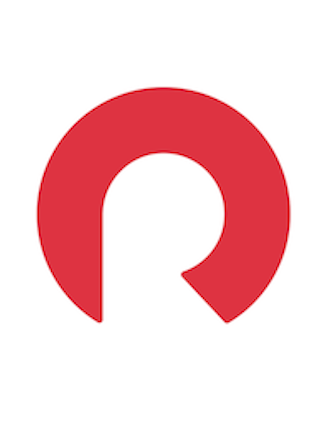Fixed-rate HELOCs: What they are and how they work
Contributed by Sarah Henseler
Jun 12, 2025
•5-minute read
Did you know that as you pay off your mortgage, you build equity in your home? Equity is the difference between a property’s value and the remaining mortgage balance. Think of it as how much of your house you have paid off. That equity can be used to fund projects or help you with urgent bills. There are a few different ways to access this, but one way is a fixed-rate home equity line of credit (HELOC).
While Rocket Mortgage® doesn’t offer this type of loan, it might be an option for you and your situation.
What is a fixed-rate HELOC?
When you take out a HELOC, you get a line of credit against the equity you’ve built in your home. A fixed-rate HELOC lets you repay part of this back on a fixed interest rate plan. Once that period is up, you pay the rest back at an adjustable rate. Unlike a home equity loan, you only pay interest on the amount of credit you use. HELOCs usually function on a 30-year term basis. This is split between a draw period and a repayment period, with the repayment period typically being longer than the draw period.
Your house acts as collateral in a HELOC and borrowing is limited to a set amount of time. In the past, most HELOCs were variable rate. However, lenders offering a fixed interest rate for part of the timeline are becoming more common.
HELOCs can be used for nearly anything, so people often use them to pay for remodels, home improvements, hospital bills, or debt consolidation.
As with most kinds of loans, your credit score and other factors affect the terms.
Fixed-rate HELOCs at a glance
Fixed-rate HELOCs are different from variable-rate HELOC options in a few key ways:
- They have a set interest rate for a set period of time.
- They might have higher fees than variable-rate options.
- When interest rates are rising, a fixed-rate HELOC can help borrowers by locking in the current rate before it climbs higher.
How do fixed-rate HELOCs work?
The fixed-rate HELOC can be considered a hybrid between a traditional HELOC and a fixed-rate home equity loan. You can withdraw the amount you need and are approved for from your credit line and convert it to a fixed interest rate.
The amount you can convert will depend on the lender, your qualifications, and the terms of your HELOC. It might be the entire balance, or it might only be a set amount.
Advantages of fixed-rate HELOCs
While adjustable-rate HELOCs and home equity loans have their upsides, a fixed-rate HELOC has certain advantages.
- More predictable payments: Your rate won’t vary, so you’ll know exactly what your monthly payment will be during the fixed-rate period.
- Immunity against inflation: Fixed rates protect you from sudden interest spikes. While traditional HELOCs often have lower rates initially, inflation can make them unpredictable.
- Conversion to a variable interest rate: If interest rates drop during the fixed-rate period, some lenders will let borrowers change to an adjustable rate. However, there may be additional fees.
Disadvantages of fixed-rate HELOCs
Fixed-rate HELOCs aren’t the perfect solution for everyone. Here are some considerations:
- Limits on the number of fixed-rate balances: Your lender may have a limit on the number of fixed-rate balances you can carry at one time.
- Hidden fees: Your lender may incorporate hidden fees with your fixed-rate home equity line of credit. These can include an annual fee, origination fee, fees for every rate lock you choose to initiate, and penalty fees.
- Minimum required borrowing amount: When you borrow from a lender, they usually require a minimum loan amount to qualify you for the fixed-rate option.
- Fewer available lenders: While fixed-rate HELOCs can be found, many lenders are still hesitant to offer them.
How to convert an existing HELOC to a fixed HELOC
Let’s say you already have an existing variable-rate HELOC but want to get a fixed-rate version. Here’s how you can go about doing this:
1. Consider your options
If a fixed-rate HELOC is what you want, most borrowers have two options. They can refinance their existing loan or apply for a new one. Let’s take a closer look at these.
Refinance your old HELOC
Speak with your current lender and see if they’ll let you switch to a fixed-rate HELOC. If so, they can walk you through the refinance process.
Apply for a new HELOC
If you can’t or don’t want to refinance your current loan, getting a new one with that lower interest rate you’re eyeing is another option. It’s probably better to do this toward the end of your current HELOC’s draw period though to avoid having two open at once. Be aware that you’ll have to go through the full application process again.
2. Talk with your current lender or shop around
Not all lenders offer a fixed-rate option, and your existing lender might not. Either way, you’ll want to explore different possibilities. Requirements, fees, and rates will vary based on lender.
3. Apply for your HELOC
Once you find a lender you’re comfortable with, you’ll follow their application process to receive your HELOC. Be prepared to provide detailed financial information to avoid delays.
4. Close on your loan
Once you’re approved, you’ll be able to close on the loan. After the paperwork is finished, you can use the funds from your HELOC as you need.
FAQ
Here are some commonly asked questions about fixed-rate HELOCs.
Can I pay off a HELOC early?
It’s always best to check with your lender before assuming anything. In many cases, you will be able to pay off the debt early, which can save you money in the long run, but there might be prepayment penalties.
Why aren’t HELOC rates fixed all the time?
Just like with primary mortgages, variable rate options are common. There are benefits and drawbacks to both variable and fixed rate mortgages, and the same goes for HELOCs. One is not necessarily better than the other, so many lenders offer both.
Is a HELOC high-risk?
All debt comes with some risk, but HELOCs carry with them the fact that your home is used as collateral. This means it has additional risks such as home foreclosure. Always carefully consider your finances and explore all options before taking on more debt.
Can I sell my house if I have a HELOC?
Yes, you can sell your house even if you have taken out a home equity loan or HELOC. Be aware that you won’t get any profits from your home sale until you pay off the balance, though.
The bottom line: Fixed-rate HELOCs aren’t for everyone
Fixed-rate HELOCs are a stable option with reliable payments for some people. However, interest rates can be unpredictable, and you might find yourself paying a higher rate if they drop. If they seem to be on the rise and likely to keep moving in that direction, and you have a clear timeline for what you need the money for, then a fixed-rate HELOC can be a good option
Rocket Mortgage doesn’t offer HELOCs, but we do offer home equity loans. If you’re ready, apply for a home equity loan today.

Kate Friedman
Kate is a contributing writer and publisher who has worked with Rocket since 2022. She also works as a middle-school interventionist and has taught personal finance and life skills to high-schoolers.
Related resources
8-minute read
When should I refinance my mortgage?
Wondering if and when you should refinance your mortgage? Refinancing can be a smart move for certain homeowners depending on a few key factors.
Read more
7-minute read
Second mortgage vs. refinance: What's the difference?
Not sure whether to take out a second mortgage or refinance? Read our article to learn about the differences, which might be better and how to get started.
Read more

7-minute read
Cash-out refinance vs. HELOC: Which is best for you?
Cash-out refinances and HELOCs can help homeowners secure funds when they need them. Learn the difference between the two and choose which is best for you.
Read more